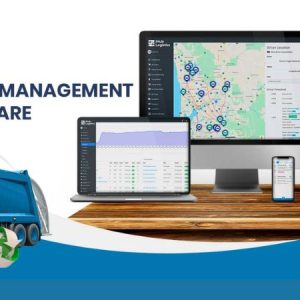GPS fleet tracking systems are a combination of tracking hardware and software that collect data and convert it to usable information. For example, they can help to optimize navigation, monitor vehicle health and maintenance, and ensure driver safety and efficiency.
Here is a rundown of some of the many features GPS fleet tracking systems offer:
- Tracking hardware: To collect vehicle and driver data, you need some form of tracking hardware, like electronic logging devices (ELDs). You can often choose from several device types, depending on what you want to track. Standard trackers include plug-and-play devices, hardwired devices and solar-powered hardware. You can also set up accessories like single- or dual-facing dashcams, temperature monitors, asset trackers, trailer trackers, panic and privacy buttons, and ID card readers. Vehicles with multiple drivers can be monitored using driver-specific key fobs.
- Performance and optimization: Most GPS tracking systems track driver behavior and navigation, which can help ensure driver safety and route optimization. You can also track actions like speeding, harsh acceleration or braking, idling, and seat belt usage. Managing these types of activities, while simultaneously monitoring fuel performance, helps optimize fleet usage.
- Driver safety: You can track driver behavior through data and video telematics. When a driver engages in risky activities, they can receive an instant warning. Modern AI technology can identify and start recording whenever a driver is distracted, tired or looking away from the road. Dual-facing dashcams monitor both the driver and the road ahead – even at night, thanks to infrared lighting. Some systems can also monitor and block certain smartphone functions while the phone’s owner is driving (e.g., calling, texting and using apps). Most systems have some form of driver scorecard so you can see who your best drivers are and the ones needing additional training. Some systems even offer driver coaching so you can keep drivers up to date and compliant with the safest driving policies and behaviors.
- Geofencing and mapping: To keep your fleet safe and accountable, GPS tracking systems come with geofencing and mapping features. These allow you to map out the best routes for your drivers and set specific ranges that they should stay within. You can track your fleet in real time and receive a notification if a driver travels outside their assigned location.
- Maintenance and vehicle health: Pretty much every GPS fleet tracking system we researched tracks vehicle health and maintenance needs. Common analytics include fuel level, battery voltage, temperature, RPM, seatbelt usage, engine fault codes, odometer and service history. In addition to tracking engine diagnostics, the software can send out vehicle maintenance reminders based on mileage or engine hours. These alerts allow you to schedule preventive maintenance to reduce maintenance costs and keep your fleet safe and healthy. Interestingly, several firms we reviewed are owned by tire manufacturers, which offer discounts on their own products when it’s time to replace tires. Several firms are developing EV battery/range reporting technology, but none offer this at the time of writing.
- Alerts and reporting: Every telematics system has alert and reporting features that can be customized according to client preferences and requirements. Diagnostic alerts might highlight issues such as a low battery or fuel level, engine warning lights, unauthorized usage, and (on the likes of NexTraq) temperature fluctuations.




